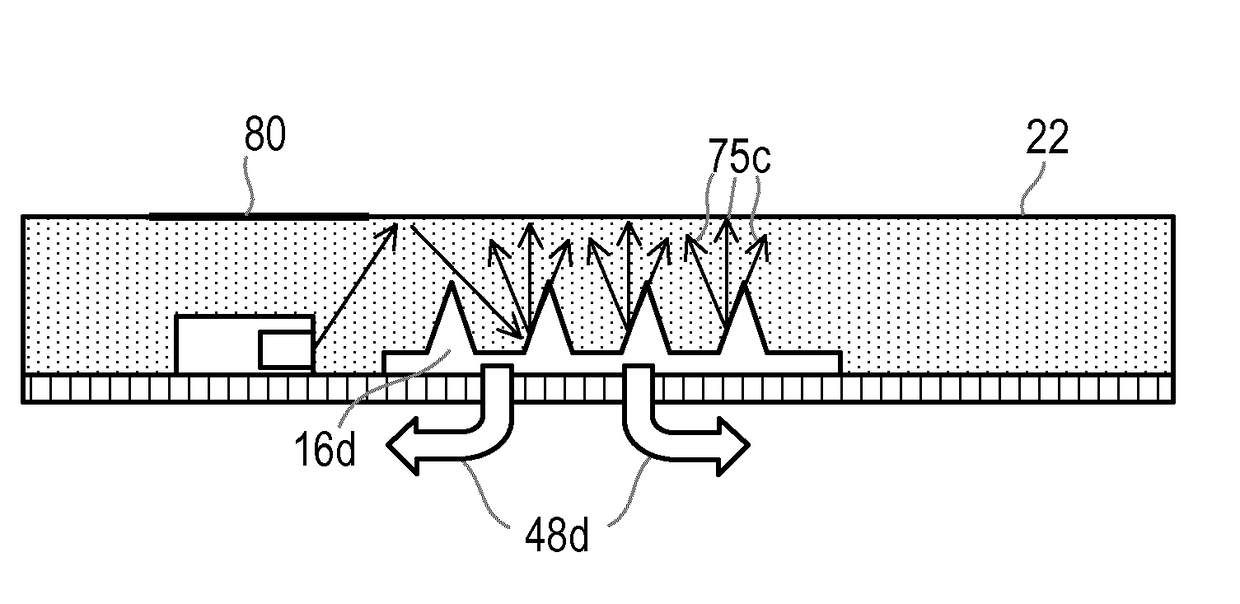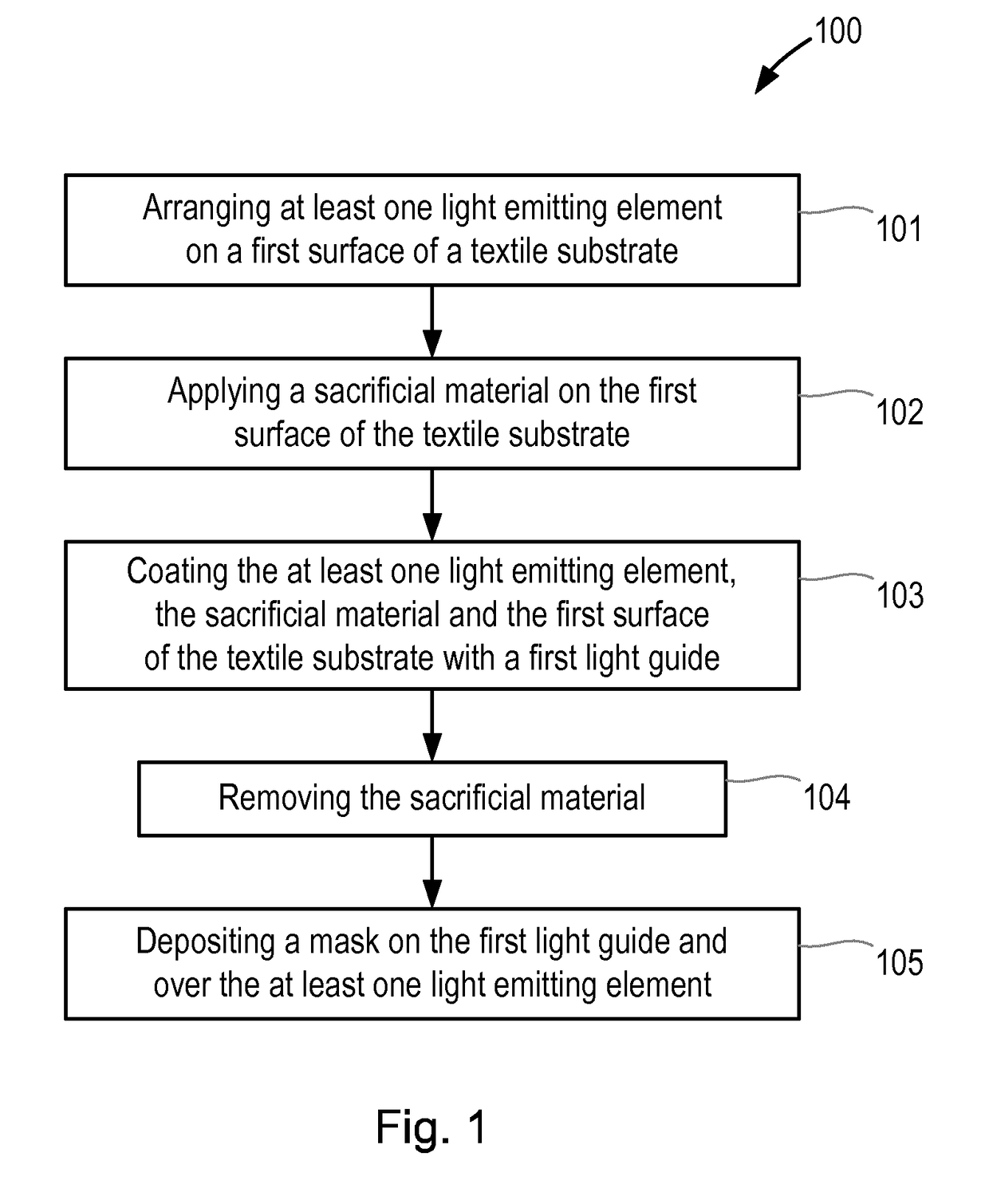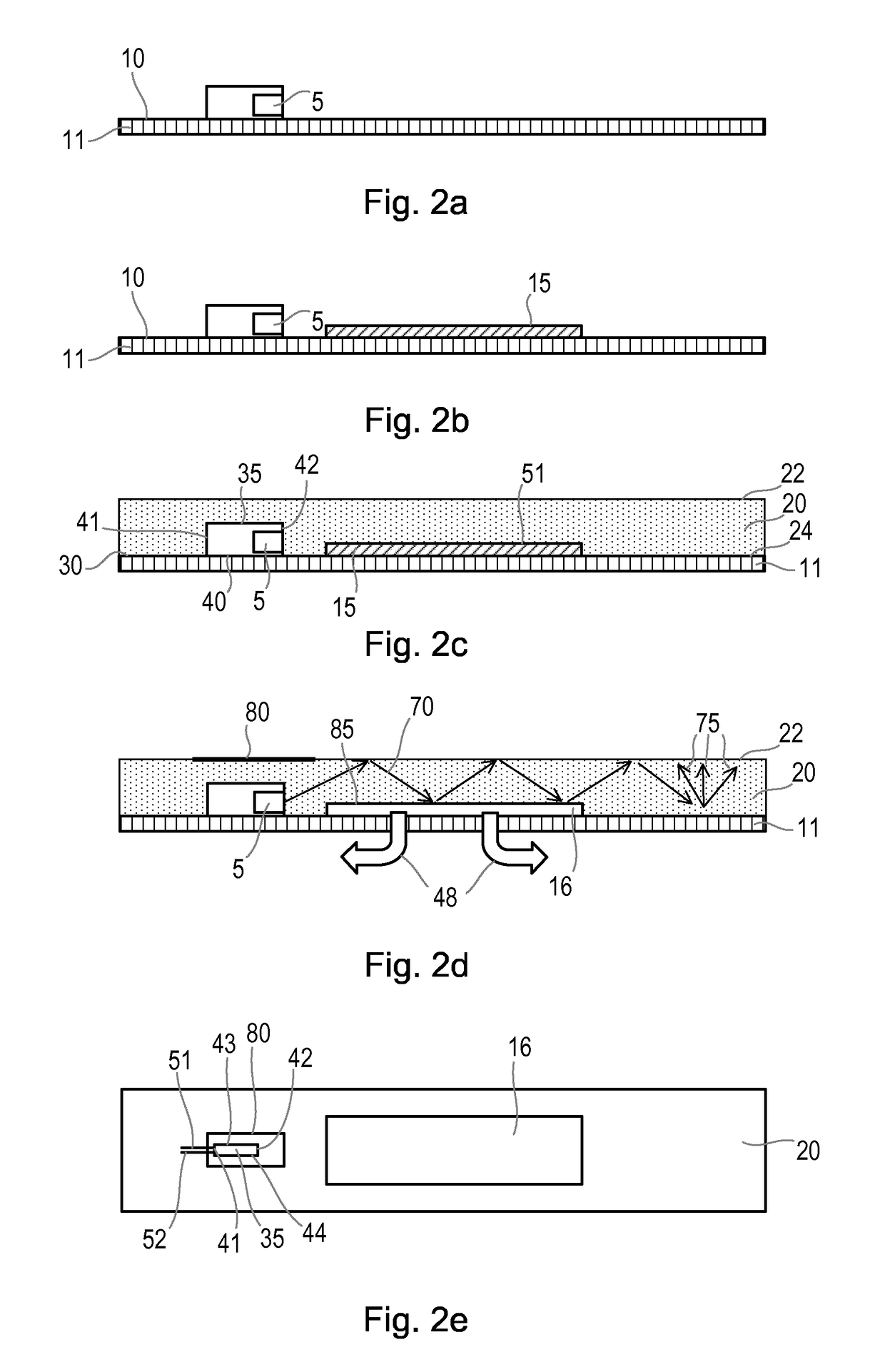Light spreading in textiles
a textile and light technology, applied in the field of light emitting devices, can solve the problems of increasing absorption and appearance not always creating an appealing look, and achieve the effects of low light uniformity, minimal/decreased bright spots, and thin and flexible systems
- Summary
- Abstract
- Description
- Claims
- Application Information
AI Technical Summary
Benefits of technology
Problems solved by technology
Method used
Image
Examples
example 1
on of a Light Emitting Device Comprising an LED, Water Soluble Sacrificial Material and a Black Ink Mask
[0055]A light emitting device in accordance with the present invention is made as follows. An LED is secured to the surface of a fabric of woven polyester filaments by soldering to conductive wires that are woven inside the fabric. A water-soluble sacrificial layer of polyvinylalcohol is deposited on the surface of a fabric. The sacrificial layer is deposited by sputtering through a mask. A transparent layer of silicone (LSR 7060, available from Momentive) is applied to the surface of the fabric, the sacrificial layer and the LED by coating and is cured. The sacrificial layer is removed by exposing it to water. The permeability of the fabric allows the sacrificial layer to be removed by passage through the fabric. A mask comprising black ink is deposited on the layer of cured silicone and positioned over the LED by screen printing and is cured.
example 2
on of an Optical Model
[0056]A series of optical models was constructed in accordance with the present invention comprising the following elements:[0057]white diffusing reflective textile substrate;[0058]Nichia 204 side emitting LED, height=0.4 mm;[0059]silicone light guide, layer thickness=1 mm;[0060]white reflective mask over LED, radius=3.5 mm;[0061]black rings for angular selection, inner radius=2.5 mm, outer radius=3.5 mm;[0062]sacrificial layer made from wax, inner radius=3.5 mm, outer radius=8.0 mm.
[0063]The following models were constructed based on an LED arranged on a textile substrate and a light guide coating the light emitting element and the substrate:[0064](a) one LED, no mask, no air gap;[0065](b) one LED, one mask over the LED, no air gap;[0066](c) one LED, one mask over the LED, one air gap at interface between substrate and light guide.
[0067]The modeling system used was the optical ray trace software which is available from LightTools. The peak illuminance was calc...
PUM
 Login to View More
Login to View More Abstract
Description
Claims
Application Information
 Login to View More
Login to View More - R&D
- Intellectual Property
- Life Sciences
- Materials
- Tech Scout
- Unparalleled Data Quality
- Higher Quality Content
- 60% Fewer Hallucinations
Browse by: Latest US Patents, China's latest patents, Technical Efficacy Thesaurus, Application Domain, Technology Topic, Popular Technical Reports.
© 2025 PatSnap. All rights reserved.Legal|Privacy policy|Modern Slavery Act Transparency Statement|Sitemap|About US| Contact US: help@patsnap.com



